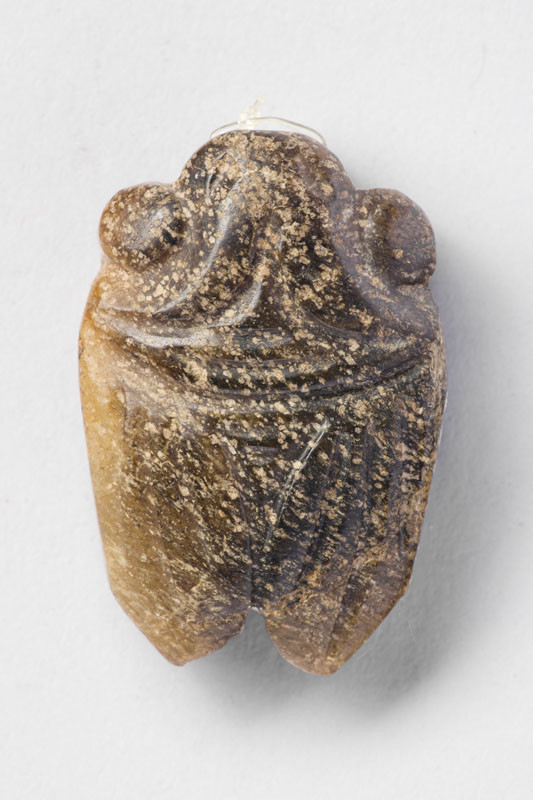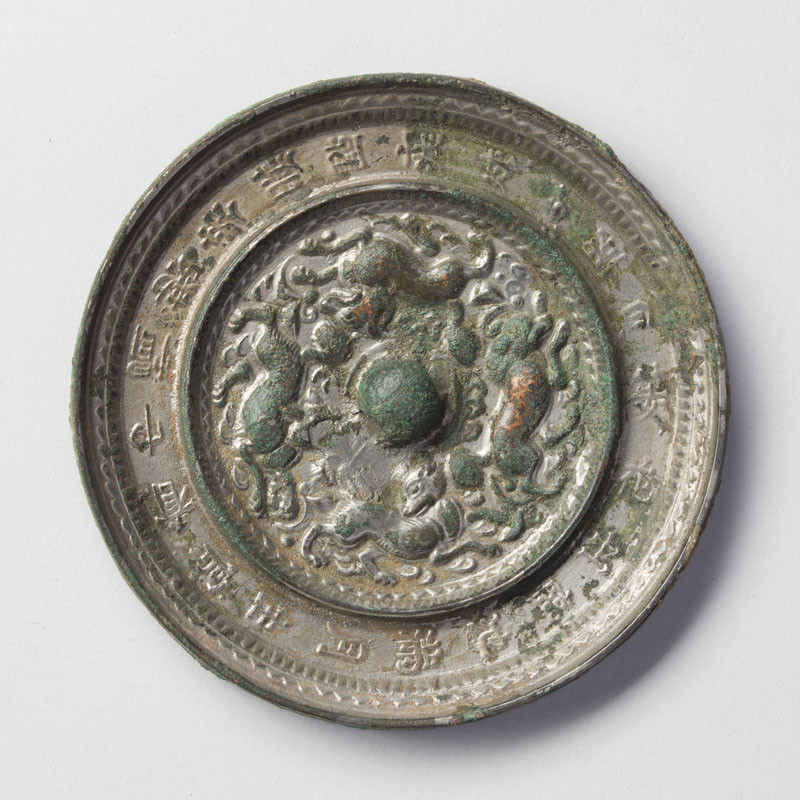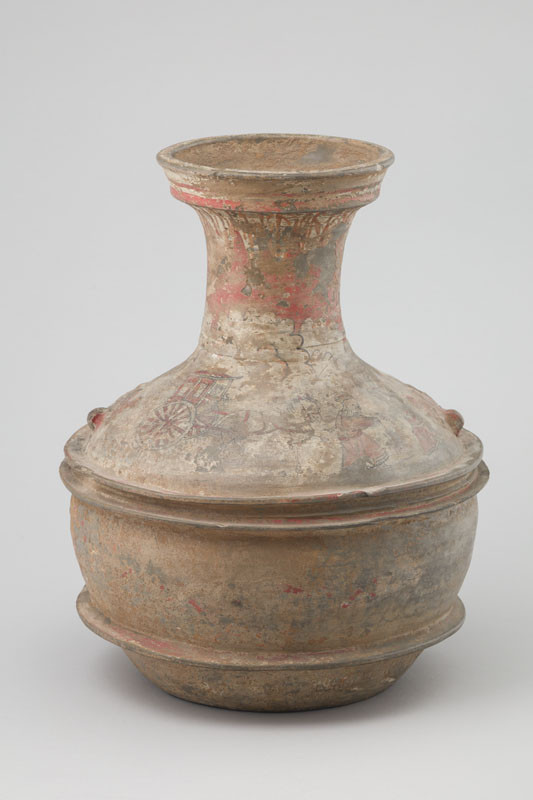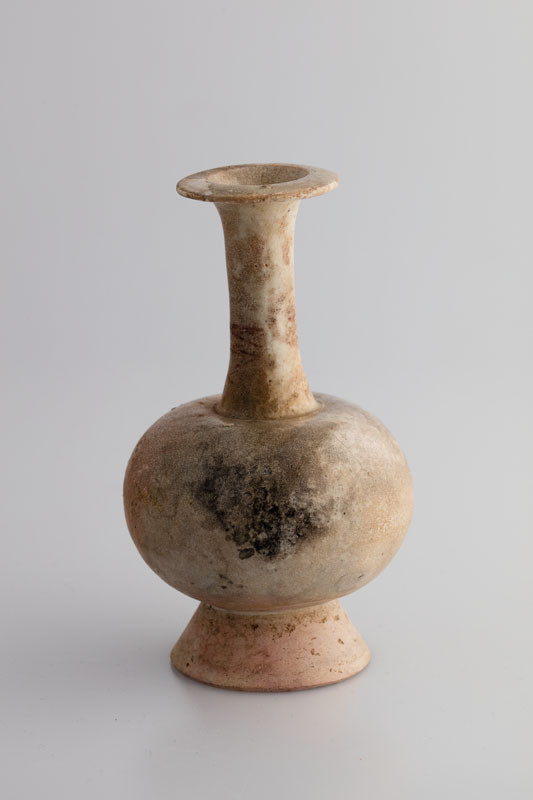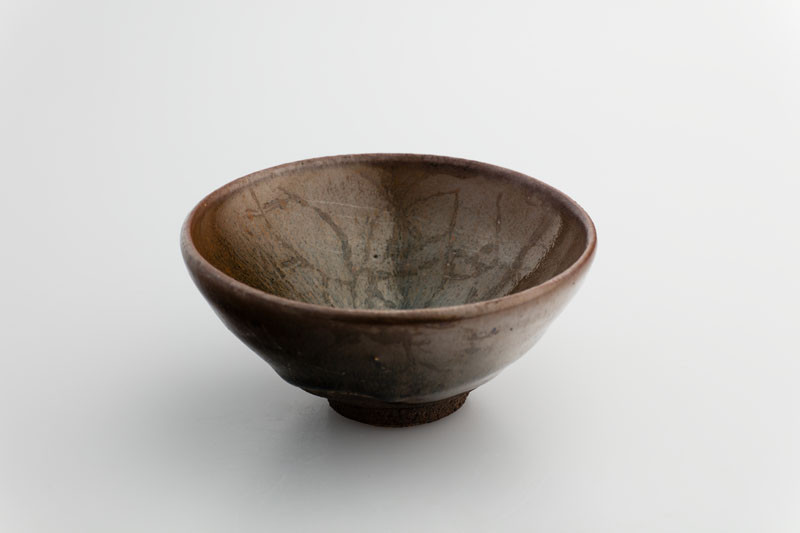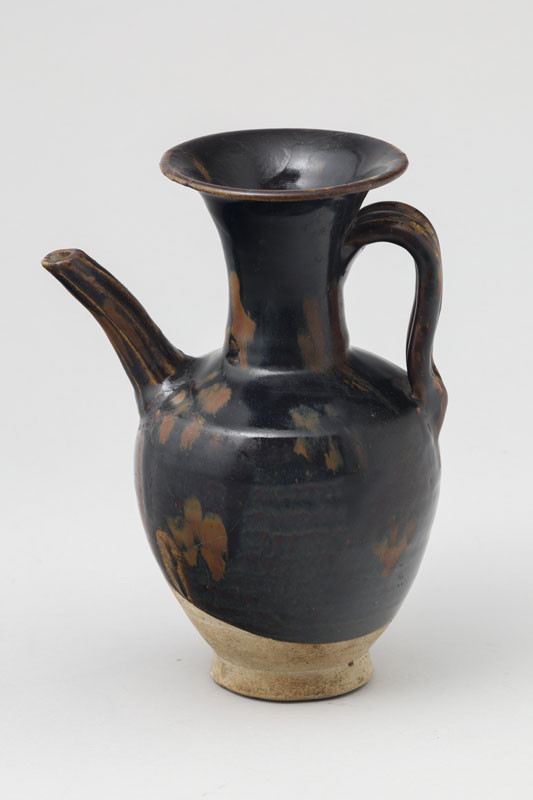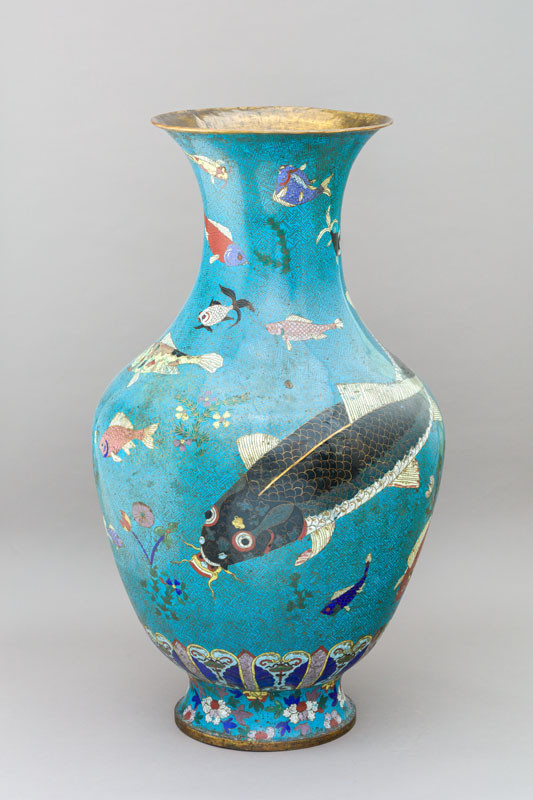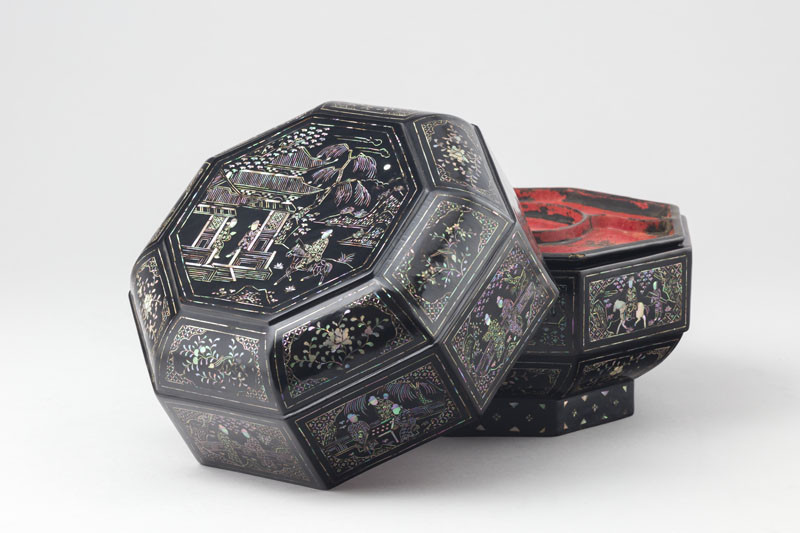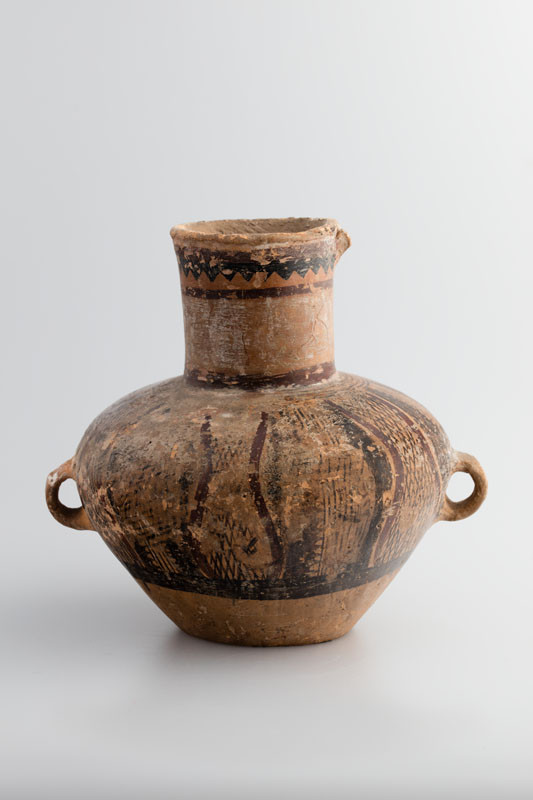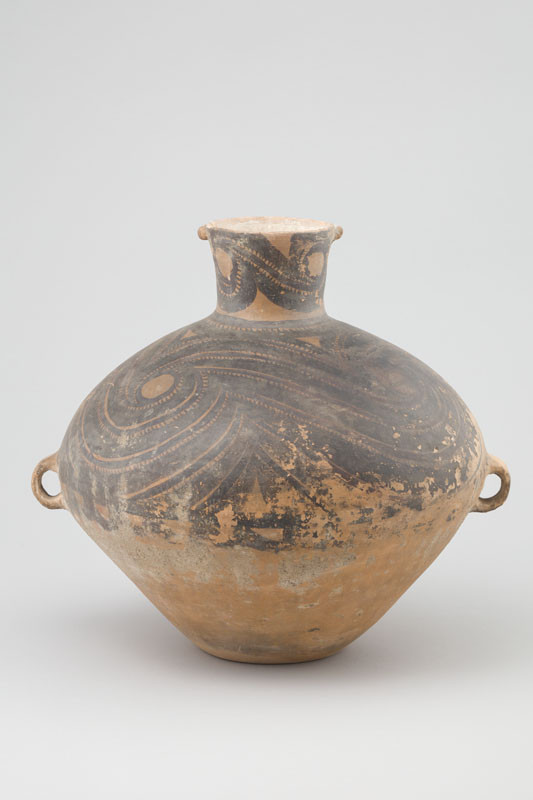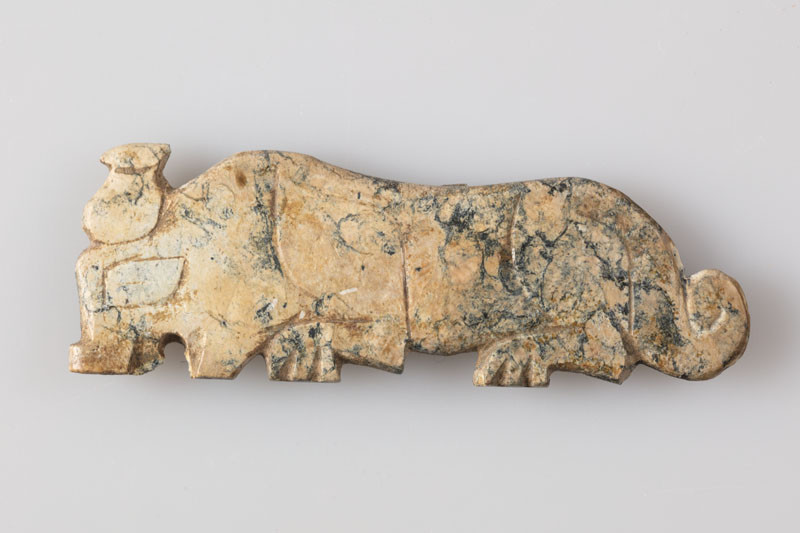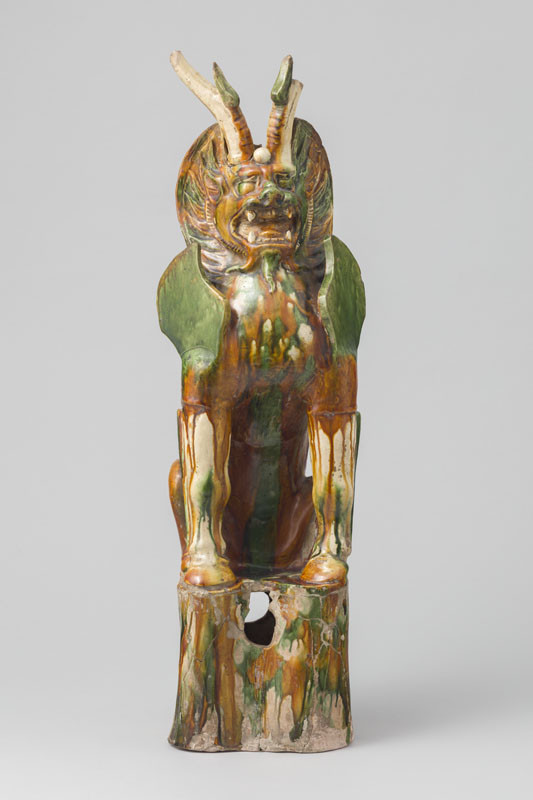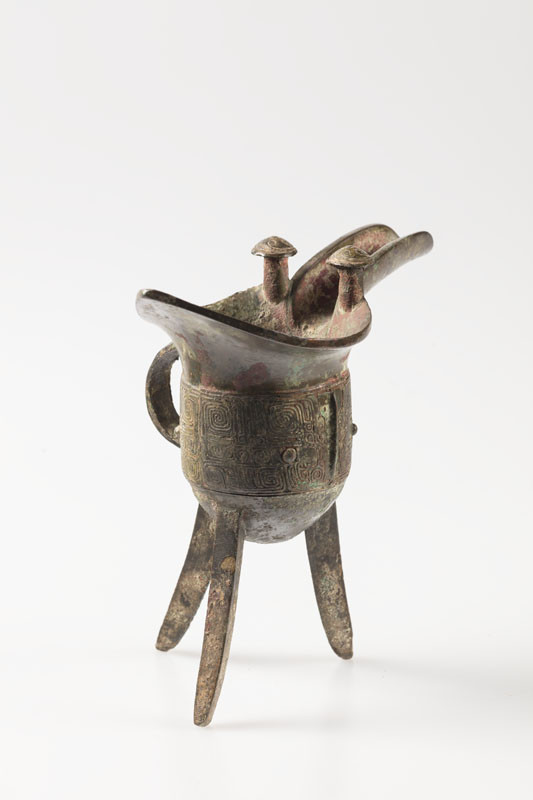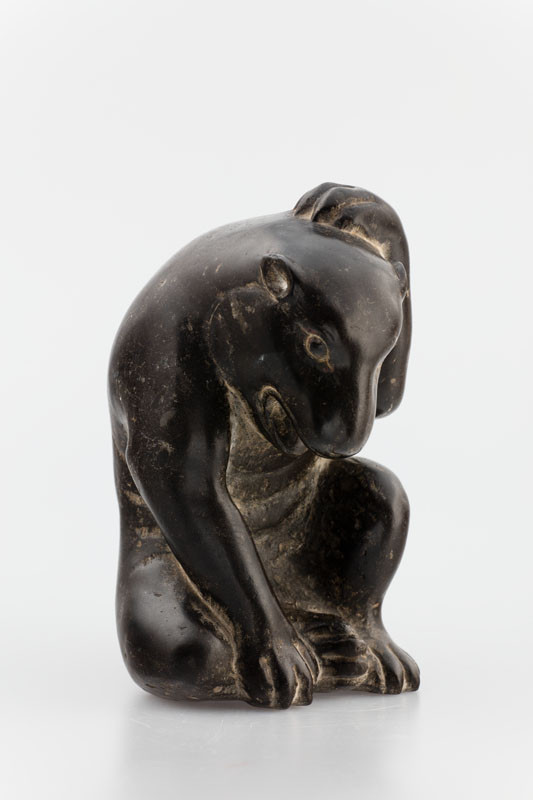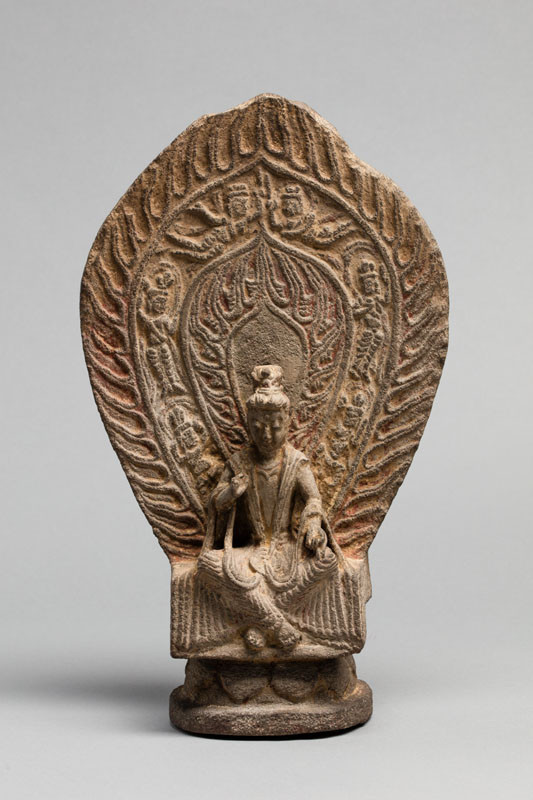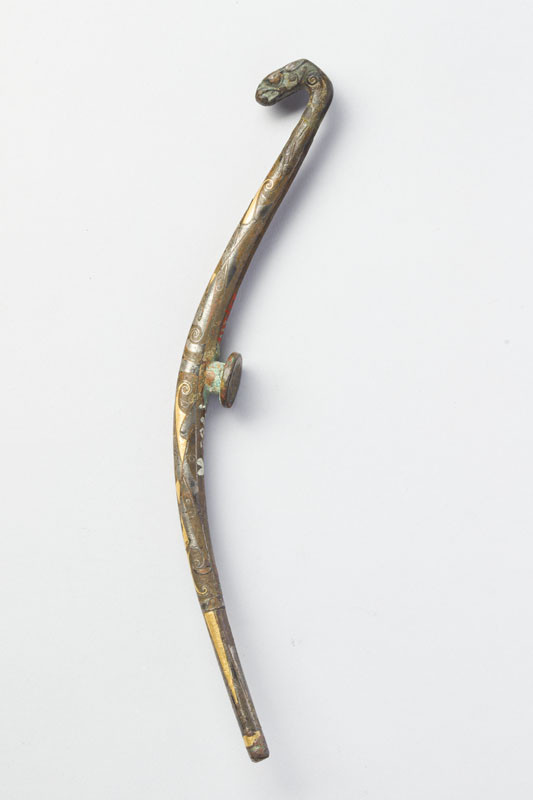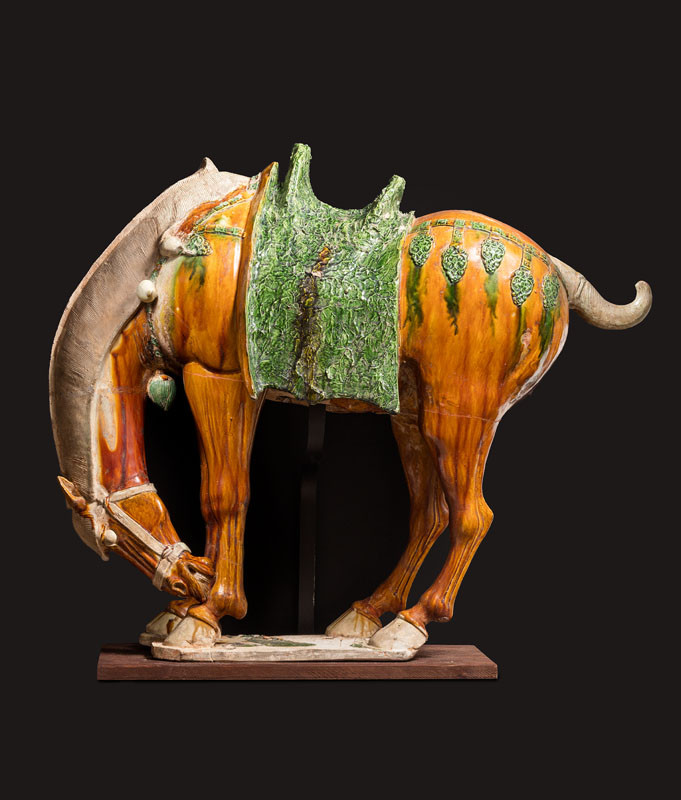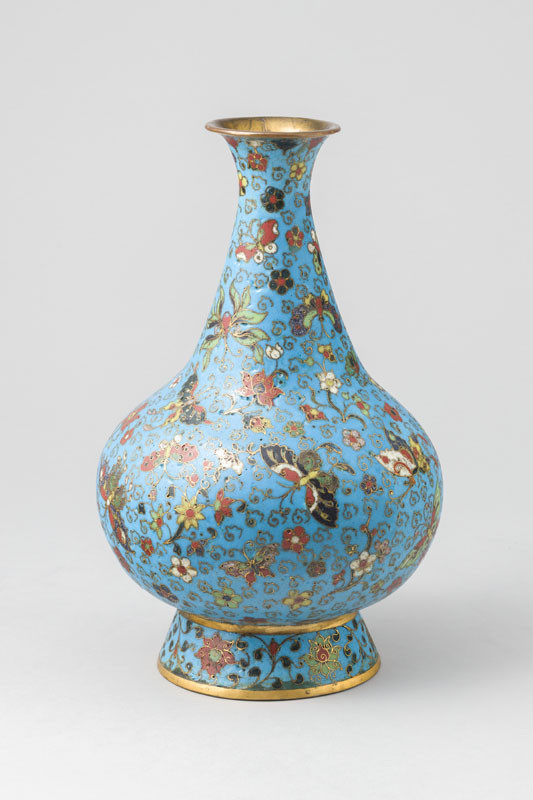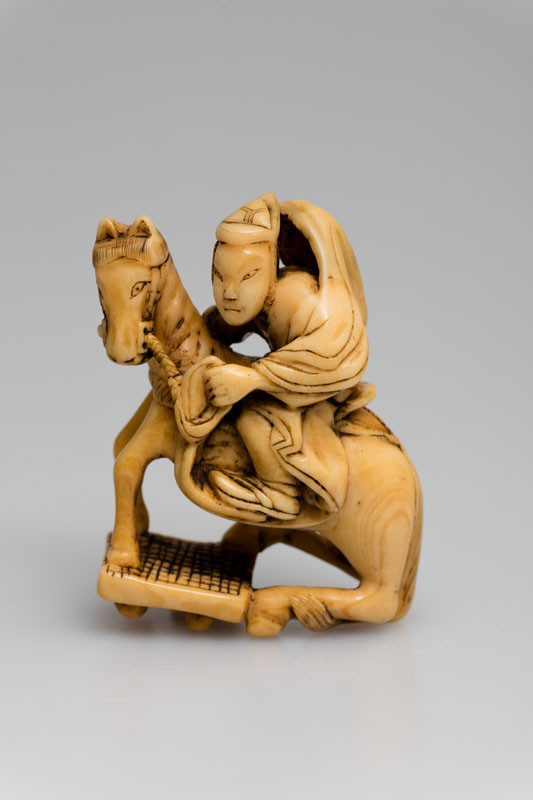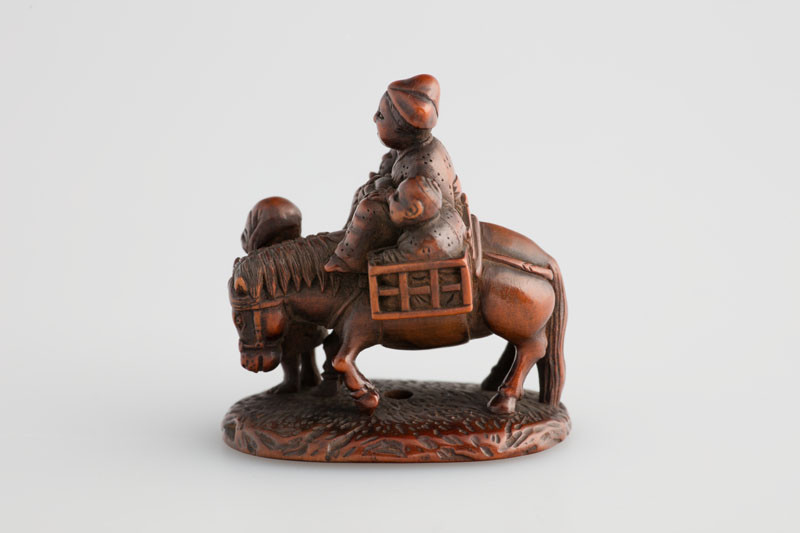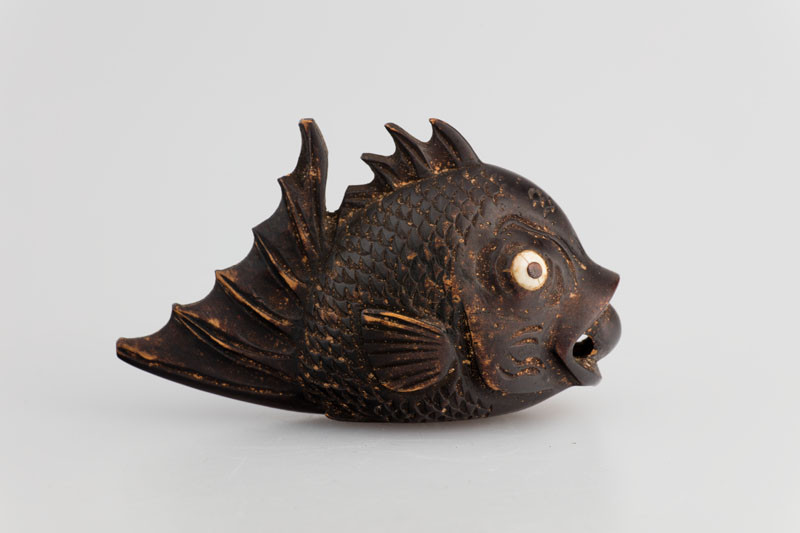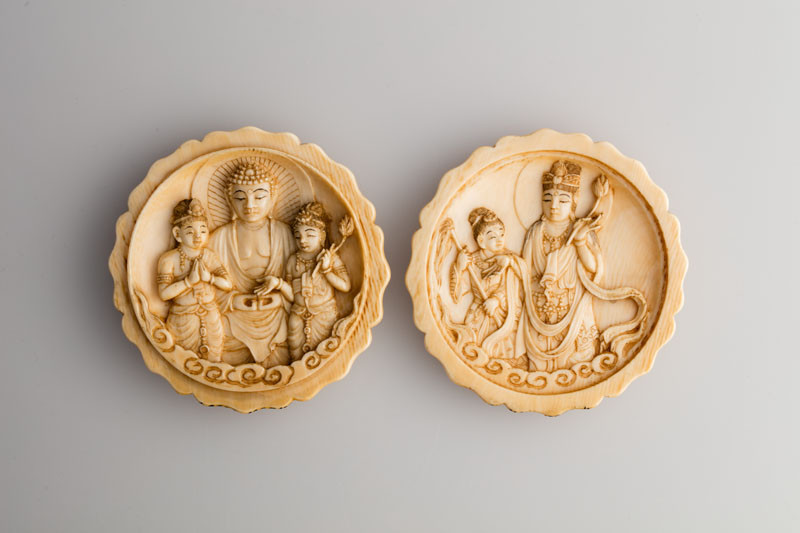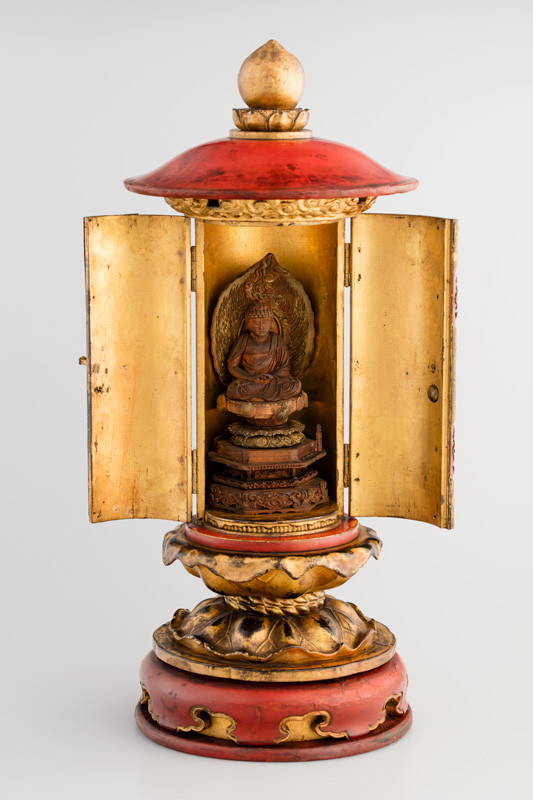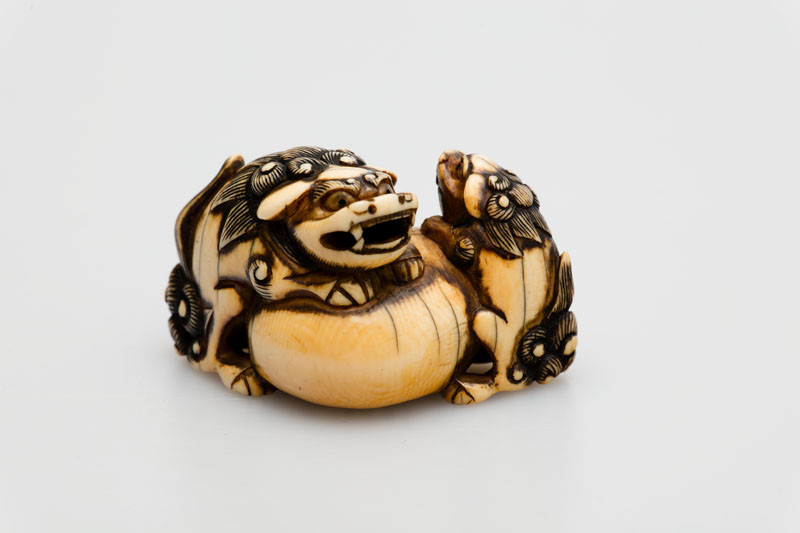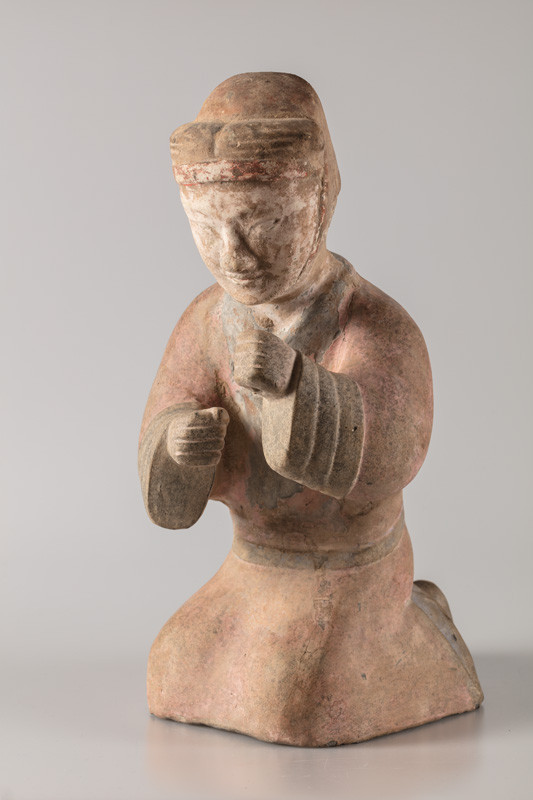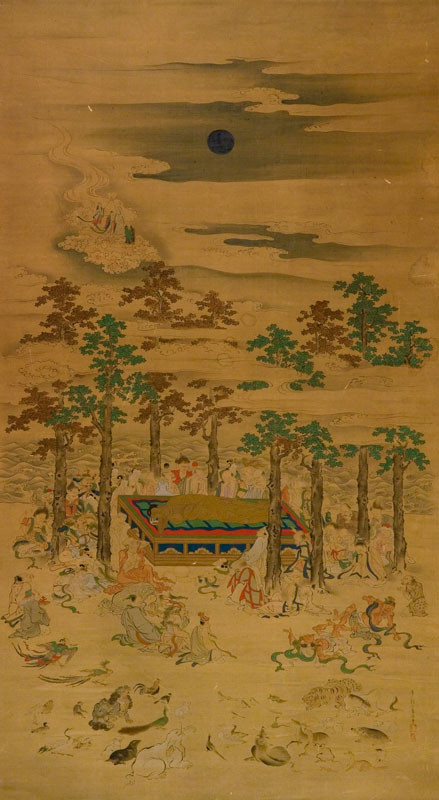
The vertical scroll with the motif of Parinirvana (nehanzu) depicting the death of the historical Shakyamuni Buddha (5th century B.C.) and his entry into Nirvana is an example of the most widespread type of Buddhist icon in China and Japan. It served as the main votive object for a ritual practised every year on the anniversary of Buddha’s death: the 15th day of the second month of the lunar calendar. The ritual took place in major halls of Buddhist monasteries in the presence of the clergy and believers who recited excerpts from sutras describing the circumstances of Buddha’s death by the Ajirawati River. The central motif is the dying Buddha resting on his right side and dressed in a flowing golden robe. His face reflects everlasting peace and harmony in contrast to the pain and despair of his pupils and adherents. Turbulent waves in the background reflect the dynamically rendered figures. In terms of iconography, this artwork represents perhaps the most comprehensive grouping of the Buddhist pantheon. Bodhisattvas, Buddha’s ten closest pupils, devas, Buddhist guardians of Heaven and Earth and more are assembled around Buddha. They witness Buddha’s death together with his mother Maya, who descends from the clouds with her entourage. Also present are monks and believers followed by representatives of the animal realm and demons. The scene therefore represents the universalism of dharma, Buddha’s key concept, which applies to all living creatures without exception. The Parinirvana of Prague was done in a period affected by the marginalization of Buddhist painting. Its iconography is faithful to the oldest types of nehanzu, but in artistic terms, it is a product of the late Edo era. The absence of underpainting, the frugal colouration in lighter shades (atypical of traditional Buddhist painting, which usually employs richly layered pigments), the emphasis on a modulated (not overly distinct) ink line and the use of the washing technique of painting, tarashikomi, are stylistic elements characteristic of the Japanese decorative Rimpa School. One of its later representatives includes Tanaka Hōji, a pupil of Sakai Hōitsu. He was especially known for his floral compositions.

